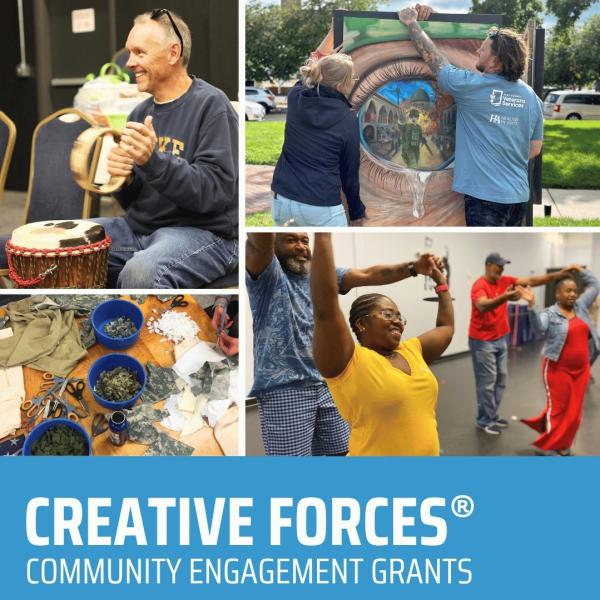New NEA Research Report Shows Potential Benefits of Arts Education for At-Risk Youth
Washington, DC -- At-risk students who have access to the arts in or out of school also tend to have better academic results, better workforce opportunities, and more civic engagement, according to a new NEA report, The Arts and Achievement in At-Risk Youth: Findings from Four Longitudinal Studies. The study reports these and other positive outcomes associated with high levels of arts exposure for youth of low socioeconomic status.
The Arts and Achievement in At-Risk Youth study uses four separate longitudinal studies (three from the U.S. Department of Education) to track children, teenagers, and young adults who had high or low levels of arts engagement in or out of school. Those activities included coursework in music, dance, theater, or the visual arts; out-of-school arts lessons; or membership, participation, and leadership in arts organizations and activities, such as band or theater.
The study focuses on the potential effects of arts engagement on youth from the lowest quarter of socioeconomic status. Although most of the arts-related benefits in this report applied only to these at-risk youth, some findings also suggest benefits for youth from advantaged backgrounds.
"Arts education doesn't take place in isolation," said NEA Chairman Rocco Landesman. "It has to take place as part of an overall school and education reform strategy. This report shows that arts education has strong links with other positive educational outcomes."
Among the key findings:
Better academic outcomes -- Teenagers and young adults of low socioeconomic (SES) status who have a history of in-depth arts involvement ("high arts") show better academic outcomes than low-SES youth with less arts involvement ("low arts"). They earn better grades and have higher rates of college enrollment and attainment.
- Low-SES students who had arts-rich experiences in high school were ten percent more likely to complete a high school calculus course than low-SES students with low arts exposure (33 percent versus 23 percent).
- High-arts, low-SES students in the eighth grade were more likely to have planned to earn a bachelor's degree (74 percent) than were all students (71 percent) or low-arts, low-SES students (43 percent).
- High-arts, low-SES students were 15 percent more likely to enroll in a highly or moderately selective four-year college than low-arts, low-SES students (41 percent versus 26 percent).
- Students with access to the arts in high school were three times more likely than students who lacked those experiences to earn a bachelor's degree (17 percent versus five percent).
- When it comes to participating in extracurricular activities in high school, high-arts, low-SES students are much more likely also to take part in intramural and interscholastic sports, as well as academic honor societies, and school yearbook or newspaper -- often at nearly twice or three times the rate of low-arts, low-SES students.
- High-arts, low-SES college students had the highest rates of choosing a major that aligns with a professional career, such as accounting, education, nursing, or social sciences (30 percent), compared to low-arts, low-SES students (14 percent) and the overall SES sample (22 percent).
- Half of all low-SES adults with arts-rich backgrounds expected to work in a professional career (such as law, medicine, education, or management), compared to only 21 percent of low-arts, low-SES young adults.
- High-arts, low-SES eighth graders were more likely to read a newspaper at least once a week (73 percent) compared to low-arts, low-SES students (44 percent) and the overall SES sample (66 percent).
- High-arts, low-SES young adults reported higher volunteer rates (47 percent) than the overall sample and low-arts, low-SES young adults (43 and 26 percent respectively).
- High-arts, low-SES young adults voted in the 2004 national election at a rate of 45 percent, compared to 31 percent of low-arts, low-SES young adults.
Related Content
Contact
Sally Gifford
202-682-5606
giffords@arts.gov




